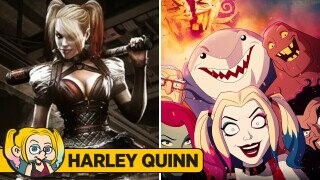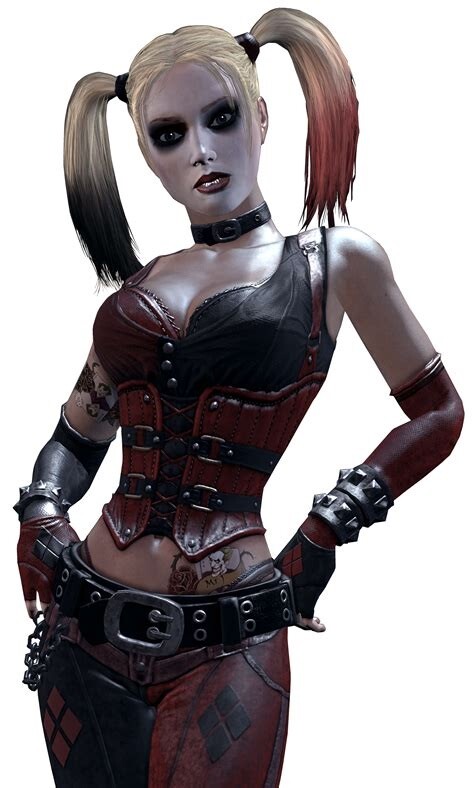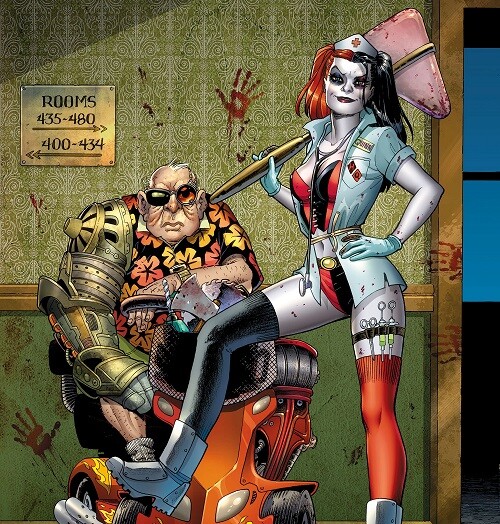4 Things That Led To Harley Quinn Blowing Up

Harley Quinn went from a random henchwoman inspired by a soap opera to being described by DC Comics as one of the four "pillars" keeping the company in business, along with Superman, Batman, and Wonder Woman (sorry, Polka Dot Man). No offense to Harley's talented creators, but: how the hell did that happen? Obviously, if we knew for sure then we would be the fourth pillar of the DC Universe, but here are some ideas:
She Helped Breathe New Life Into Joker Just When He Was Going Stale
Mark Hamill has talked at length about how he didn't want to play Joker in Batman: The Animated Series because how was he (or anyone else) supposed to follow Jack Nicholson's take on the character? At that point, the character wasn't even showing up much in the comics, probably because writers were similarly intimidated with the idea of following up his disturbing appearances in critically acclaimed tales like The Dark Knight Returns, The Killing Joke, and Arkham Asylum -- there was a sense that all of the definitive Joker stories had already been told and all they could do now was screw up.
Don't Miss
But then, Hamill's Joker unexpectedly turned out to be one of the most iconic versions of the character, and he'll be the first to admit that his new main squeeze was a big part of that.
As comics writers struggled with the dilemma of whether Joker should be all dark and psychopathic or a funny clown, the animated series found a way to make him both via Harley, who is naturally more lighthearted. He could be threatening mass murder one moment and have to deal with her BS the next. Also, Batman fans had never seen Joker being forced to deal with relationship issues, so this opened up a whole new dimension for the character. Harley made Joker more relatable; who hasn't ended up in trouble with their significant other because you ratted out on them in exchange for a reduced sentence?
This was all pretty intentional on the part of her creators. Writer/producer Paul Dini says he wanted to introduce a female counterpart to bring out the funnier part of Joker's personality by giving him someone he could banter with, inspired by the various groovy henchwomen who hanged around him in the '60s Batman show.
But, as the show progressed, Dini realized Harley could also be used for a lot more ...
Her Backstory Is A Distillation Of All The Best Supervillain Origins
Pretty soon, every writer on Batman: The Animated Series wanted to do a Harley episode; Dini called her the show's "wild card," since she could show up to bug the heroes in any context, even without her boyfriend present. Her popularity led to appearances in the show's comic book spin-off, Batman Adventures, and eventually a special issue that would reveal her origin. At the time, Dini happened to be going to therapy, so he and artist/co-creator Bruce Timm came up with the idea that she could be an Arkham Asylum psychiatrist treating Joker who ended up falling for him.
As far as Bat-villain origins go, this one hits all the marks: an academic background (Scarecrow), a doomed love story (Mr. Freeze), a meek woman turning fierce villainess (movie Catwoman), an agent of the law being corrupted (Two-Face), an illogical obsession taken to extreme limits (Riddler), and, of course, someone going thoroughly bonkers (all of the above, but especially Joker).
The resulting comic, Batman Adventures: Mad Love, also cemented the toxic co-dependency between the characters. The show had already established that she always kept going back to Joker no matter how crappily he treated her, but it was always presented as a gag.
But it was Mad Love, and its eventual TV adaptation, that made her into a tragic figure with its final scene, where she says she's finally leaving that abusive psychopath after he threw her through a window, but all it takes is a single rose and a note to get her hooked on her Puddin' again.
But, even though her breakthrough story was first published as a comic and won a bunch of awards and stuff, it took several more years for DC to fully incorporate her into their universe -- and even longer for them to figure out what to do with her.
Her (Terrible) Arkham Games Redesign Ended Up Helping Her
Despite having her own series for 38 issues and co-starring with Poison Ivy and Catwoman in another one for 26 more, Harley rarely appeared in other Batman comics during the 2000s. Even when her own stories took her to some pretty dark places, there was still an impression among most readers and even writers that she was a silly cartoon character stuck in the middle of some grim and gritty stuff. What ultimately changed that impression was ... putting her in a ridiculous sexy nurse costume.
The 2009 Arkham Asylum game was written by Dini and features Harley prominently in its plot. They could have easily used her classic TV show design, which she was still wearing in the comics at this point, but because the average video game fan is assumed to be a horny 14-year-old with no impulse control who will instantly buy ten copies of a game if it offers the slightest glimpse of a boob, the game's art director decided to dress her up in "a mix of a nurse and schoolgirl outfit that gives her a very interesting look I'm sure fans will appreciate!"
While this seems like something you'd see in a Batman porn parody, it did succeed at making Harley look like a real person -- a person who is starring in a Batman porn parody, but still. Also, replacing the black and red jester costume with black and red leather might have helped drive the point that Harley is basically DC's Deadpool (whose love affair with the internet had already began). The second Arkham game toned down the cringeworthy "sexiness" and ended up with something fairly similar to what Margot Robbie would wear in the movies.

Warner Bros. Interactive Entertainment
When DC hit the reset button on their comics universe in 2011, they used this design as the basis for their rebooted version of Harley as they tried to push her as a central figure in the new Suicide Squad comics. Is it depressing that it took switching her wardrobe from a full-body costume to a revealing corset to get most readers to pay attention to the character? Yep! But once she had that attention, she could do stuff like ...
Suicide Squad Finally Let Her Step Out Of Joker's Shadow
Although long-time Suicide Squad fans grumbled about the idea of making the new series so Harley-centric, the result was so successful that it led to a series of specials, spin-offs, and ultimately movies and video games. Harley and the Suicide Squad turned out to be a shockingly good fit for the same reason why she worked so well in Batman: The Animated Series: the "wild card" factor. It turns out you can tell all sorts of stories with a psychopathic gymnast with a PhD, from straight action to meta humor to, yes, masturbatory fan service with no discernible plot.
Her successful Suicide Squad run led to a (thankfully, not masturbatory) new solo comic that provided a lot of the building blocks for the Harley Quinn TV show, from fleshing out her relationship with Poison Ivy to giving her an elderly half-robot co-star.

DC Comics
More importantly, her stint with the Squad and the subsequent solo efforts proved that permanently separating the character from Joker was possible from a narrative and a financial perspective. It's just a shame that the movies felt the need to expose us to Jared Leto once to get her to that point.
Follow Maxwell Yezpitelok's heroic effort to read and comment on every '90s Superman comic at Superman86to99.tumblr.com.
Thumbnail: Warner Bros. Television Distribution, Warner Bros. Interactive Entertainment